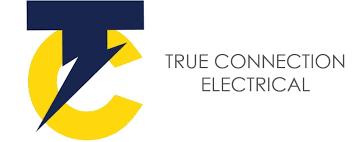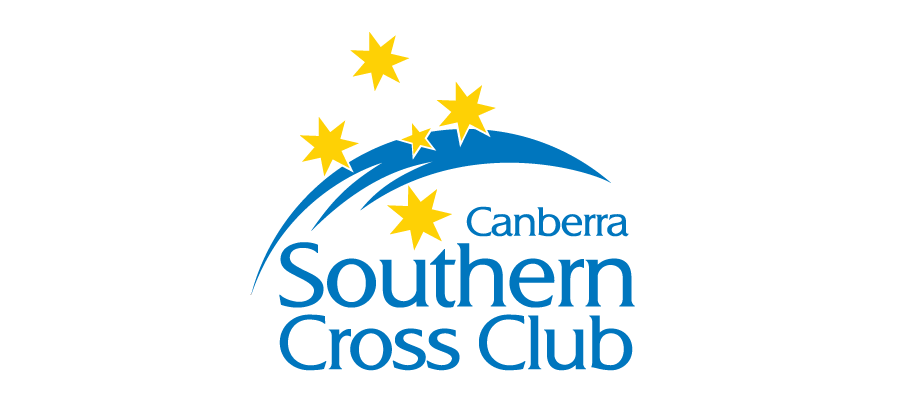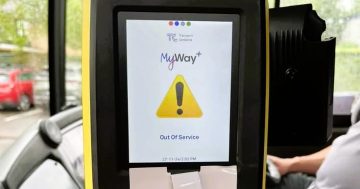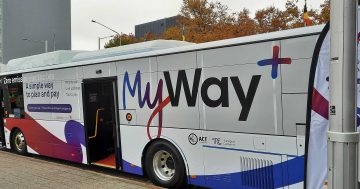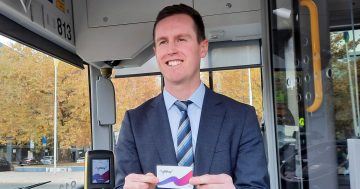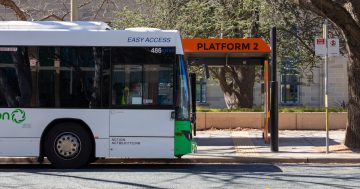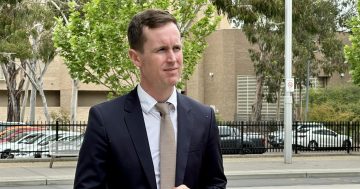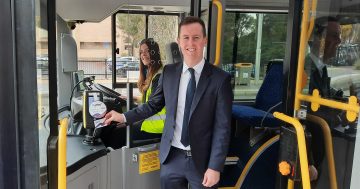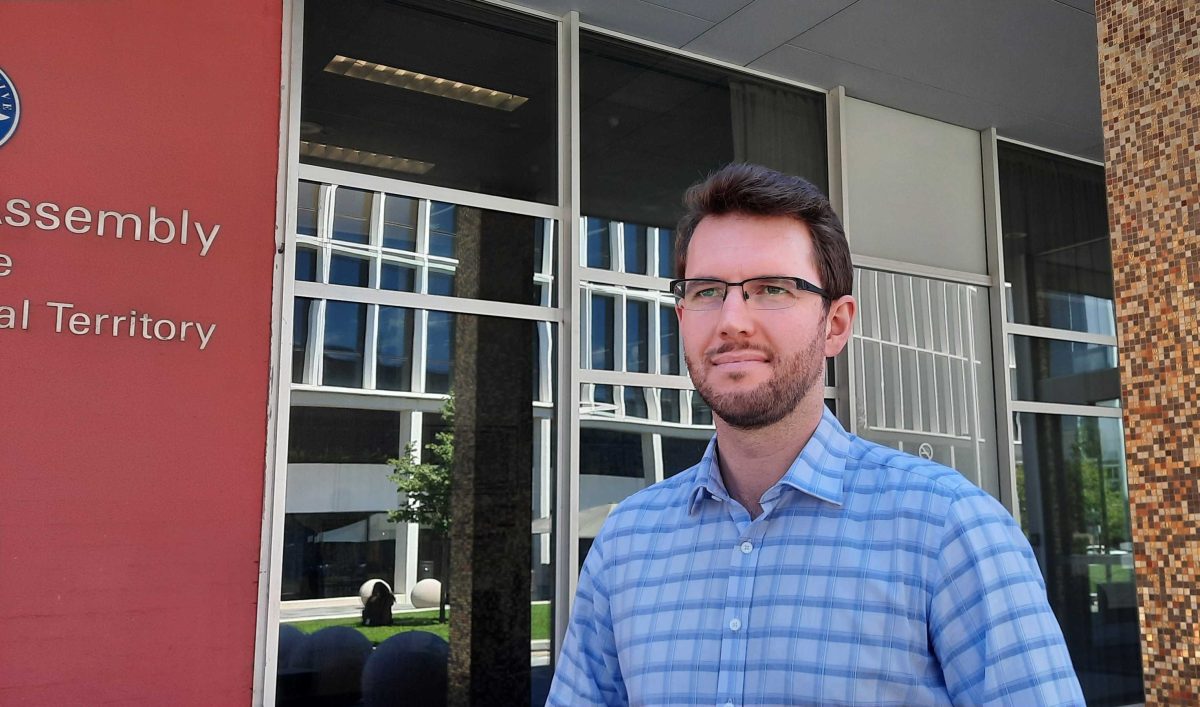
PTCBR chair Ryan Hemsley: “The QR code was not simple. It still continues to not be simple. It is in fact cumbersome and complicated and incompetently implemented.” Photos: Ian Bushnell.
Transport Canberra should ditch the QR code method of payment for MyWay+, according to the Public Transport Association of Canberra.
Conceived as a digital option for those who did not want to use a card of any kind but wanted to still draw on a MyWay + account, the QR code in the app has been the most dysfunctional of the features that users have encountered on the new ticketing system.
PTCBR chair Ryan Hemsley told a Legislative Assembly that introducing multiple payment platforms at one time and an ‘ugly’ app was a mistake that could have easily been avoided.
Mr Hemsley said the key function public transport users desired was to use a debit or credit card to tap on or off.
“The QR code was not simple. It still continues to not be simple. It is in fact cumbersome and complicated and incompetently implemented,” he said.
Mr Hemsley told the committee that a QR code on a printed ticket would be easier to scan, but the digital version had to go.
He slammed the lack of consultation from Transport Canberra with PTCBR and public transport users in general, saying it, and a poor communications strategy, contributed to the botched launch.
“The idea to make this bigger than Ben Hur and develop a whole ability as a service approach was not something we would have recommended to Transport Canberra had they come to us and asked what our members thought the new MyWay+ plus ticketing system should look like on day one,” Mr Hemsley said.
He agreed with a committee member that it would have been preferable to minimise features on launch day and add extras once the system was bedded down rather than all at once.
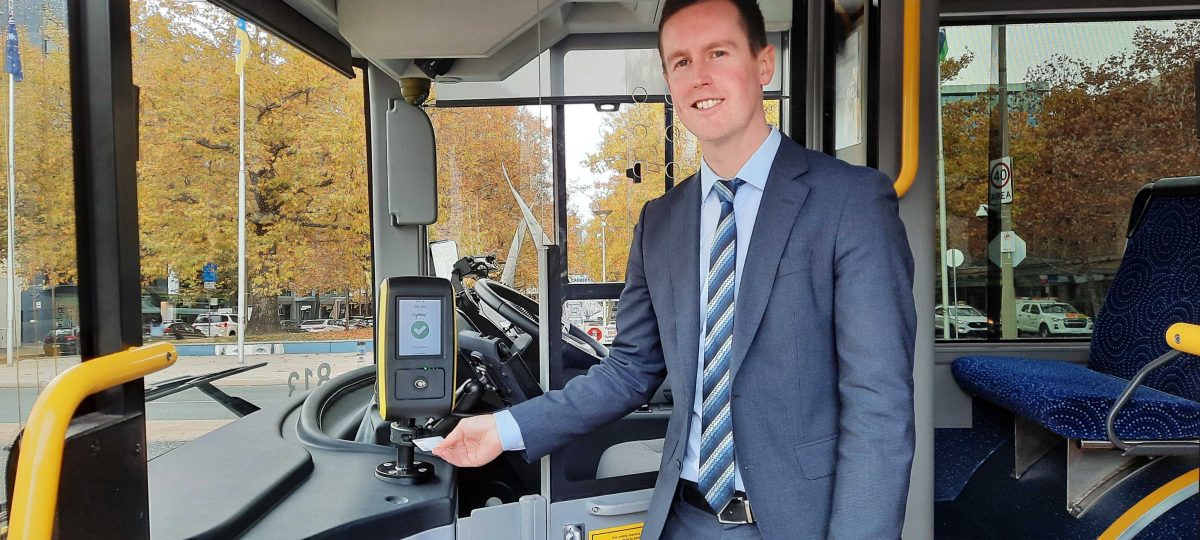
Transport Minister Chris Steel said the system’s core functions were working but conceded a slower transition would have been better.
PTCBR Deputy Chair Dr Amy Jelacic said public transport should be kept simple and stress-free.
“People aren’t asking for apps, people aren’t asking for really complicated things,” she said.
“People aren’t asking for what is called ‘mobility as a service’, which integrates different transportation types and makes it quite complex in many ways through using technology.
“We believe that public transport has to be simple and easy, a low cognitive activity, and that’s where bank card tapping comes in, not as a high tech thing that people are seeking, because they’re not.”
Both Mr Hemsley and Dr Jelacic said the launch experience had soured public transport use for many, especially older Canberrans.
PTCBR remained baffled as to why Transport Canberra and NEC signed off on the launch when it was known there were problems.
NEC Senior Product Manager Kylie Gorham told the committee the QR code provided another payment option alongside cards and had, in the past five years, become part of the public transport landscape in other cities.
“The QR token is intended to be one of many choices that people then have, and this is fundamental to not only normalisation in the industry but also to an objective that Transport Canberra had, which was to create options for their customers,” she said.
Ms Gorham said the QR code takeup was now 8 per cent, with half of all commuters using a MyWay+ card and the rest a debit or credit card.
Transport Minister Chris Steel said outside the Assembly that the system’s core functions were working and improvements were being made all the time.
He said that in the coming weeks, the option of buying a paper ticket and topping up MyWay+ cards with vending machines would be available.
A feature to enable parent to manage their child’s accounts would also be released.
“We’ve already indicated through the submission that we’re actually working with NEC on providing a digital version of the travel card through the app,” Mr Steel said.
Mr Steel conceded that a slower, more incremental approach would have been better.
“In hindsight, we could have probably promoted the first period of the transition as a transitional period rather than a hard switch over where there was this expectation that every single thing was going to work all at once,” he said.



